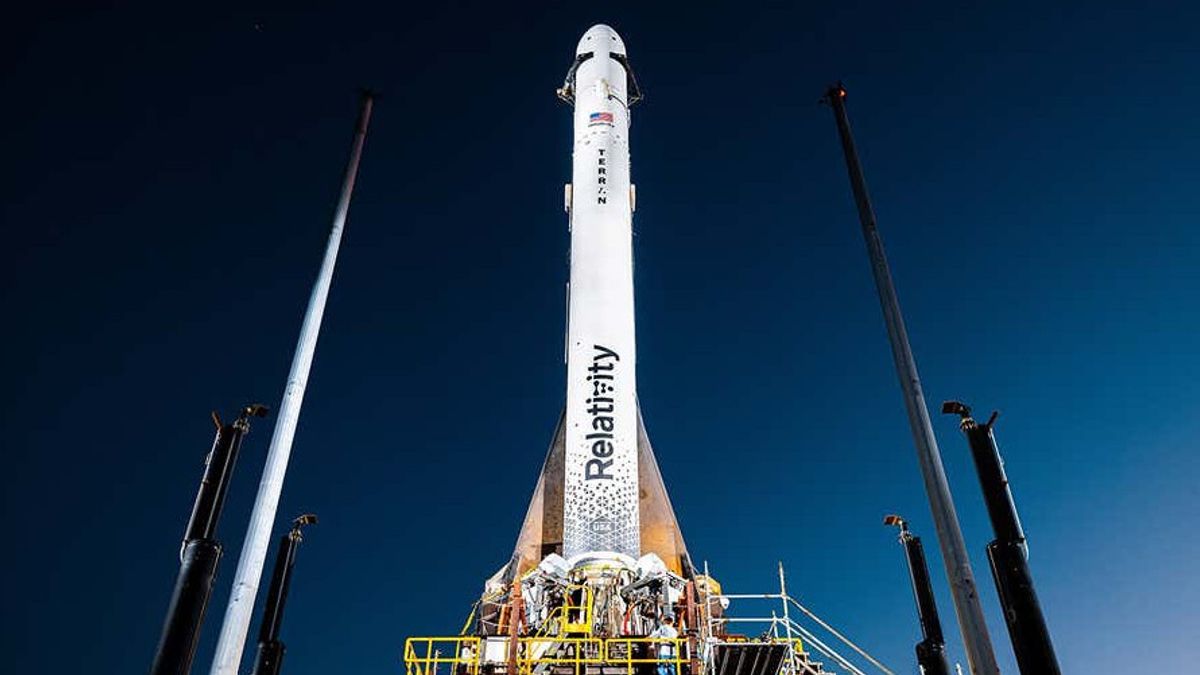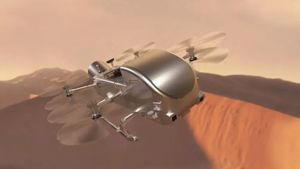JAKARTA - Aerospace company from the United States (US), Relativity Space is scheduled to launch Terran 1, the world's first 3D printed rocket into space.
Terran 1 is scheduled to be launched from Cape Canaveral in Florida, USA on March 8, at minimum PM (UTC), on a mission called "Good Luck, Have Fun", which tests whether Terran 1 can reach Earth's orbit.
"Terran 1 will be the largest 3D print object to try orbital flights," Relativity Space said in a statement.
The launch was announced on February 22 after Relativity Space obtained a license from the Federal Aviation Administration (FAA). The mission will also test Relativity Space's 3D printing technology, which combines 3D metal printing, Artificial Intelligence (AI), and autonomous robots to build rockets from raw materials within 60 days.
The rocket is about 35 meters high, making it the industry's smallest orbital rocket, and 85 percent of its mass is 3D.
In addition, Terran 1 is designed to lift up to 1,250 kilograms of loads into low-Earth orbit, and the company sets a price of 12 million US dollars (Rp185 billion) per flight.
In comparison, SpaceX's Falcon 9 rocket can lift more than 22,000 kilograms into orbit at a cost of around 67 million US dollars (IDR 1.03 trillion) per flight.
However, with a fairly small load, this software-driven rocket architecture is able to accommodate the growing needs of satellite customers, as well as provide the most agile and affordable launch service in the market.
Even so, Terran 1 will not carry any payloads on its first flight, but NASA has signed a contract with Relativity Space to launch a small satellite on a rocket in the future.
The contract is part of NASA's Venture-Class Acquisition of Dedicated and Rideshare (VADR) mission. According to NASA, VADR will provide new opportunities and scientific and technology payloads as well as drive the growth of the US commercial launch market, as quoted by TWT.
Initially, Relativity Space planned to do one last test before taking off but decided to launch it so the rocket was not at risk of being damaged.
"By not completing static shots, we accept an increased probability of cancellation on our first launch attempt, but if all systems work nominally, we would rather release and launch during our next operation than continue to use vehicles through additional testing on the ground," said Relativity Space.
Selain Terran 1, Relativity Space juga memiliki Terran R yang saat ini sedang kembangkan, kendaraan peluncuran yang sepenuhnya dapat digunakan kembali dan dipertik 3D.
Terran R itself is capable of launching 20 tons into low-Earth orbit and is designed to offer customers of point-to-point space carriers capable of carrying out missions between Earth, the Moon and Mars. Terran R will also be launched starting in 2024.
That's what vehicle customers need. Terran 1 is our road seeker, our development platform to get to Terran R," explained Relativity Space.
The English, Chinese, Japanese, Arabic, and French versions are automatically generated by the AI. So there may still be inaccuracies in translating, please always see Indonesian as our main language. (system supported by DigitalSiber.id)













